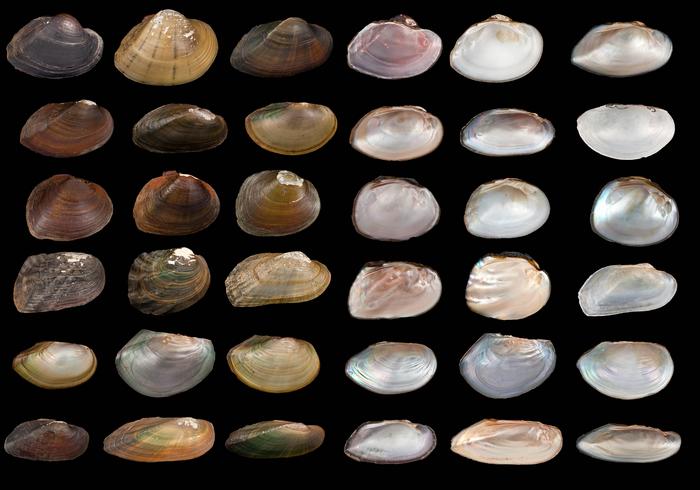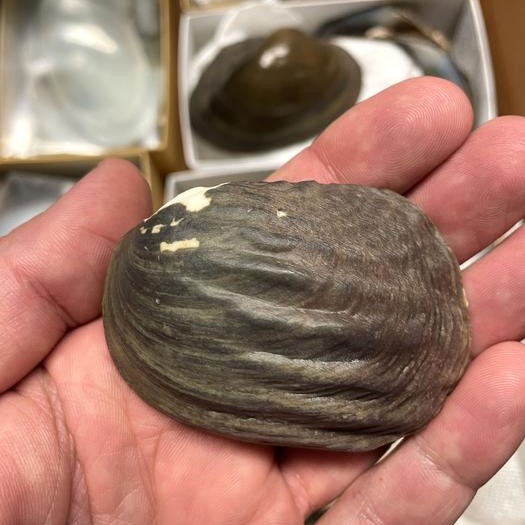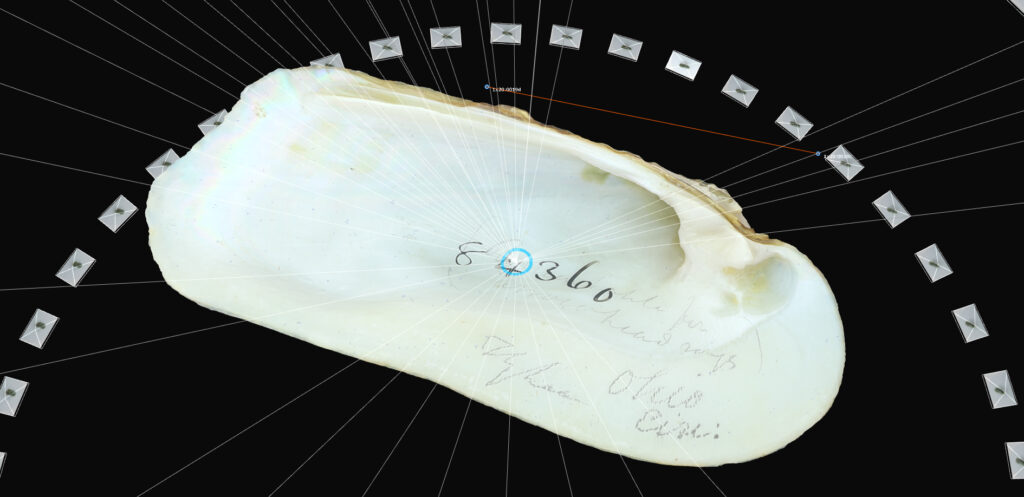From Florida Museum of Natural History 23/08/23

Scientists and imaging specialists have teamed up to help save one of the world’s most endangered groups of animals: freshwater mussels.
With funding provided by the U.S. Fish and Wildlife Service’s National Conservation Training Center, imaging experts will create 3D shell models based on specimens from the Florida Museum of Natural History and the Smithsonian Institution’s National Museum of Natural History.
Once complete, the models will be available online for free to educate the public about these amazing yet little-known creatures that dwell in rivers and streams across the United States.
“The U.S. is a globally important hot spot of freshwater mussel biodiversity,” said John Pfeiffer, curator of bivalves at the Smithsonian Institution.
“Many of the country’s freshwater mussels are at risk of extinction. Roughly one out of every three species are protected under the Endangered Species Act, and another 30 species are thought to have recently gone extinct.”
The main idea for the project, Pfeiffer said, is to put rare species directly into the hands of biologists attempting to protect them.
The National Conservation Training Center will create 3D prints of the shells to enhance its Freshwater Mussel Identification course, which it offers to conservation professionals across the country.
The digital models will also form the basis of an online course, allowing participants to virtually inspect specimens and learn to distinguish their characteristics.
“This project is very exciting because it provides opportunities to teach field biologists and the public how to identify all of the freshwater mussel species native to the United States, including the nearly 100 species listed as threatened and endangered,” said Matthew Patterson, course leader with the Service’s National Conservation Training Center.
“And all of this is happening in 2023 as the Endangered Species Act is turning 50 years old.”
Mussels are essential to the health of streams and rivers.
They filter algae, excess nutrients and heavy metals from their surroundings and stabilize streambeds by forming dense colonies.
They’re also an important source of food for other animals, including fish, mammals and birds. But years of widespread pollution, overharvesting and dam construction have imperiled freshwater mussel populations.
The Chesapeake Bay Foundation, which promotes mussel restoration in the Chesapeake Bay watershed, plans to use the 3D-printed shells to educate community members and galvanize support for mussel restoration.
“Freshwater mussels provide incredible benefits for water quality and habitat, yet many people know very little about these hidden heroes of rivers and streams,” said Chesapeake Bay Foundation senior scientist Joe Wood.
“Raising awareness is key. Giving someone the opportunity to hold a lifelike mussel shell in their hand is an important step towards protecting and restoring freshwater mussel populations.”
Given their importance and current plight, state and federal agencies have placed a strong emphasis on evaluating mussel populations and establishing regulations to safeguard species at risk of extinction.
Before agencies can take stock of mussel diversity, staff members must first know how to distinguish among species, a skill they develop by observing live specimens or training with reference shells.
As mussel populations decline, however, reference specimens become increasingly harder to come by.
For the rarest species, the only available shells are stored in museums, where they are carefully curated and seldom handled, which makes them unsuitable for training.
“Some of the specimens are incredibly rare or delicate, and it’s next to impossible to have a comprehensive reference collection to help train people,” Pfeiffer said.

“So instead, we came up with the idea to create a digital 3D library that improves access to specimens by putting all U.S. species directly at your fingertips.”
Researchers will use a method called photogrammetry to stitch multiple photographs of a single specimen into a 3D composite.
“The use of photogrammetry has been prominent in cultural heritage studies for a long time, and the biological sciences have recently hopped on the bandwagon, realizing the power it has to visualize a specimen’s external features and color in 3D.
That’s what this method really excels at,” said Zachary Randall, biological scientist and manager of the Florida Museum’s digital imaging division.
The Florida Museum operates one of the fastest and most efficient photogrammetry rigs currently in use.
Transforming two-dimensional photographs of a specimen into a three-dimensional model requires that every external feature be imaged at multiple, precise angles.
Automated software then triangulates the location of shared features in these photographs and converts them to points in 3D space.
The software connects these points to form a mesh, which it fills with imagery from the photographs.
Having more photos results in a greater degree of fidelity in the final model, but it also requires a substantially longer amount of time to complete.

“Photogrammetry models can be composed of hundreds to thousands of digital photographs and can be very time-intensive,” Randall said.
To speed up the process, Randall custom-built a photogrammetry rig consisting of three cameras and capable of simultaneously photographing from multiple angles.
The specimens are placed on an automated turntable inside a lightbox, and photographs are taken at programmed intervals while the specimen incrementally rotates.
The specimen is then flipped, so the bottom half can be imaged, and full 360-degree coverage can be captured.
It generally takes 30 minutes to completely photograph a specimen using traditional methods.
The unique photogrammetry rig at the Florida Museum can take up to 432 images in 10 minutes, and an individual specimen can be entirely photographed from all angles in as much time or less.
Specimens will be photographed and digitized at the museum, after which the scans will be uploaded to MorphoSource, an online digital repository that allows users to access free 3D models. Several mussel specimens have already been digitized and can be downloaded and printed by users.
The Florida Museum received $29,946 from the U.S. Fish and Wildlife Service to support freshwater mussel training, with an additional $5,500 awarded from the Chesapeake Bay Foundation.
The Chesapeake Bay Foundation will educate the public about mussels using 3D-printed models.
The 3D models of mussels native to the Chesapeake Bay watershed and the foundation’s mussel outreach work are supported by Chesapeake WILD funding administered by the National Fish and Wildlife Foundation.
This is one of the first projects supported by the Chesapeake WILD program, established by Congress in 2020 to aid restoration efforts in the Chesapeake watershed.



